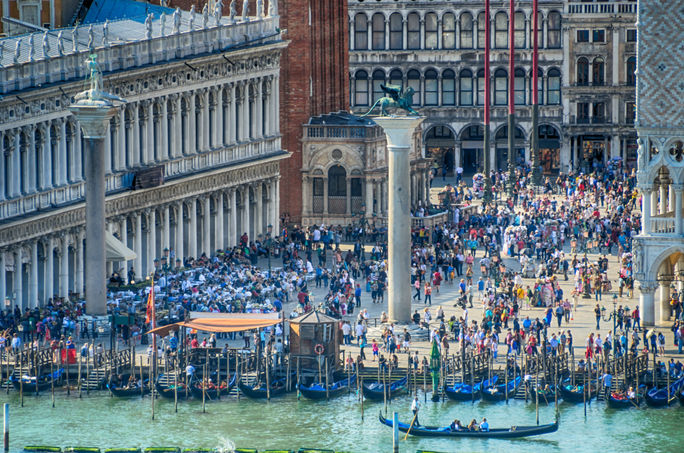Officials in Venice
have declared the famous Italian
cityЎҜs temporary tourist
tax for day-trippers an unmitigated success after the trial measureЎӘ aimed
at controlling the influx of visitors to the cityЎӘpulled in an astonishing Җ2,425,310
(around $2.64 million).
The pilot program,
which ran on 29 select days between April 25 and July 14, charged those
visiting the Floating City without an overnight hotel reservation a Җ5 entrance
fee and required a reservation. Venice officials initially anticipated
collecting around Җ700,000 ($762,163) from this scheme, mayor Luigi Brugnaro
said back in April.?
According to CNN,
a total of 3,618,114 people made reservations on these select high-volume Ў°red
flag daysЎұ during the course of just under three months. Out of these,
1,398,084 individuals were exempted because they were staying overnight in
local hotels. Other exemptions included 651,254 workers who traveled to the
city on fee days, 466,819 students, and 217,589 residents.
Additional
exemptions covered 78,224 individuals related to Venice residents and 107,146
individuals exempted for various other reasons, including having been born in
the city, participation in religious activities and involvement in cultural
events.
?
The day-use tax
also enabled the city to observe that Saturdays were the most popular days for
visitors. Ў°From a first reading of the data it appears that day-trippers
and tourists prefer Saturday to Sunday, and that during all 29 days of
experimentation a peak attendance day, equal to that recorded on 30 April 2023,
was not reached,Ўұ the city said in a statement. It also noted a gradual decline
in the number of visitors on these Ў°red flag daysЎұ occurred over time.?

Crowds in Venice, Italy (Photo Credit: Lichtwolke99 / Adobe Stock)
Ў°The experiment
worked and we can move forward. A more in-depth analysis of the data collected
in the autumn,Ўұ Brugnaro asserted during a press conference held on July 19.?
CNNЎҜs team on the
ground in Venice reported that local residents observed noticeably smaller
crowds than usual. While the city was still bustling, the crowds leading up to the
Redeemer Festival summer event seemed to be less overwhelming than they have
been in years past.
Although the
entrance fee experiment ended on July 14, the mayor's office is considering
reinstating it during peak tourist periods. However, no official date has been
set for its reintroduction.
Ў°ItЎҜs a positive
balance: The first 29 days of experimentation have finally given the city a
tool that has allowed us to know how many people would objectively arrive
in?Venice?and will be able to give us a way to act accordingly,Ўұ Tourism
Councilor Simone Venturini said in a statement.
Venice is not the
only European city engaged in an ongoing battle against mass tourism, nor the
only one to employ a tourist tax as a means of discouraging overtourism while
simultaneously making visitors pay for infrastructural improvements. Barcelona
Mayor Jaume Collboni has just announced that the Spanish cityЎҜs existing tax on
stopover cruise ship passengers will
soon be raised substantially.
?
For the latest travel news, updates and deals, subscribe to the daily TravelPulse newsletter.
Topics From This Article to Explore